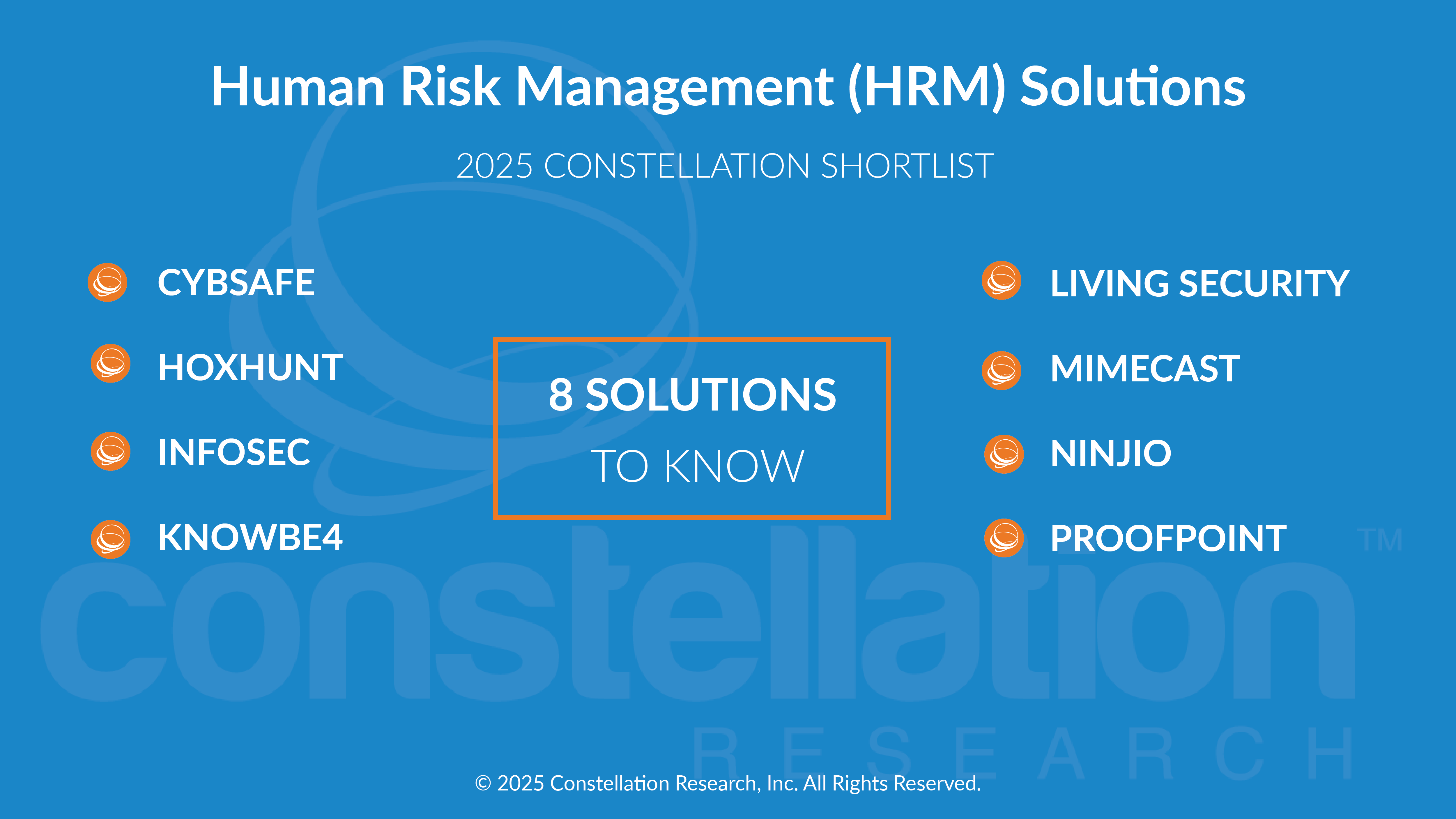
About This ShortList
In today’s digital landscape, humans remain both a critical asset and a significant vulnerability. Traditional Security Awareness Training (SAT) has evolved into Human Risk Management (HRM)—a strategic approach that addresses human-centric risks by integrating AI-driven insights with neuroscience principles to create a proactive security culture.
HRM solutions leverage AI to analyze behavioral data, predict risk scenarios, and deliver interventions tailored to individual user profiles. Coupled with neuroscience-driven nudges and emotionally resonant training, these solutions address both cognitive and emotional dimensions of behavior change. The result is a robust approach to mitigating human risk, fostering long-term security awareness, and enhancing organizational resilience.
Threshold Criteria
Constellation considers the following criteria for these solutions:
- Behavior Identification and Risk Scoring
- AI-Powered Behavior Analysis: Uses machine learning algorithms to identify risky behaviors across security domains, such as phishing susceptibility, credential handling, and access patterns.
- Comprehensive Risk Scoring: Combines AI-driven insights, identity context, and attack exposure data to assess risk at granular levels, offering real-time updates on organizational risk posture.
- AI and Neuroscience-Driven Nudges and Interventions
- AI-Driven Nudges: Utilizes AI to analyze context and deliver personalized, real-time nudges based on individual behavior patterns, reinforcing secure habits.
- Emotionally Resonant Interventions: Applies neuroscience principles to craft emotionally engaging training, such as gamified scenarios and narrative-based learning, amplified by AI-driven content customization.
- Adaptive Reinforcement: AI optimizes the timing and frequency of interventions to align with neuroplasticity, ensuring sustained behavior change.
- Automation and Personalization
- Dynamic Personalization: AI tailors training and interventions dynamically based on user profiles, behavioral trends, and identified risks, ensuring relevance and impact.
- Automated Policy Adjustments: Leverages AI to enforce risk-based policy updates, such as adjusting access permissions or escalating alerts for high-risk users.
- Integration and Usability
- Seamless Ecosystem Integration: Integrates with existing security tools, such as SIEM, IAM, and endpoint protection, enhancing overall system efficiency.
- AI-Enhanced User Engagement: AI optimizes content delivery based on user preferences, learning styles, and engagement history, improving participation and retention rates.
- Cultural and Compliance Support
- AI-Driven Cultural Insights: Uses AI to analyze sentiment, engagement, and behavioral patterns across the workforce, providing actionable insights into security culture maturity.
- Regulatory Compliance: Ensures alignment with standards such as GDPR, HIPAA, and ISO 27001 through AI-driven compliance tracking and reporting.
- Advanced Analytics and Reporting
- Predictive Analytics: AI forecasts potential risk scenarios by analyzing behavioral data, enabling proactive measures and preemptive interventions.
- Neuro-AI Dashboards: Combines neuroscience-informed metrics with AI-powered analytics to provide detailed insights into risk management effectiveness and user engagement.
The Constellation ShortList™
Constellation evaluates more than 20 solutions categorized in this market. This Constellation ShortList is determined by client inquiries, partner conversations, customer references, vendor selection projects market share and internal research.
- CYBSAFE
- HOXHUNT
- INFOSEC
- KNOWBE4
- LIVING SECURITY
- MIMECAST
- NINJIO
- PROOFPOINT
Frequency of Evaluation
Each Constellation ShortList is updated at least once per year. Updates may occur after six months if deemed necessary.
Evaluation Services
Constellation clients can work with the analyst and research team to conduct a more thorough discussion of this Constellation ShortList. Constellation can also provide guidance in vendor selection and contract negotiation.


